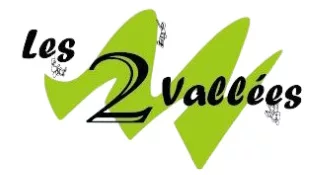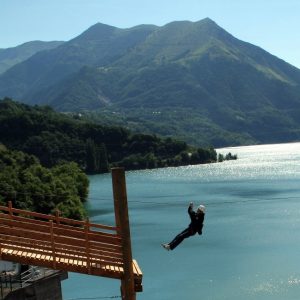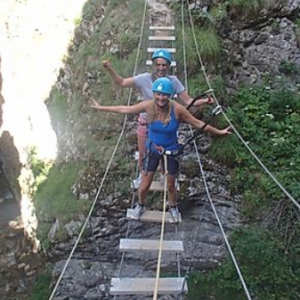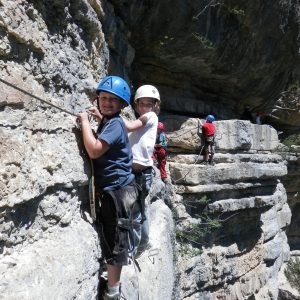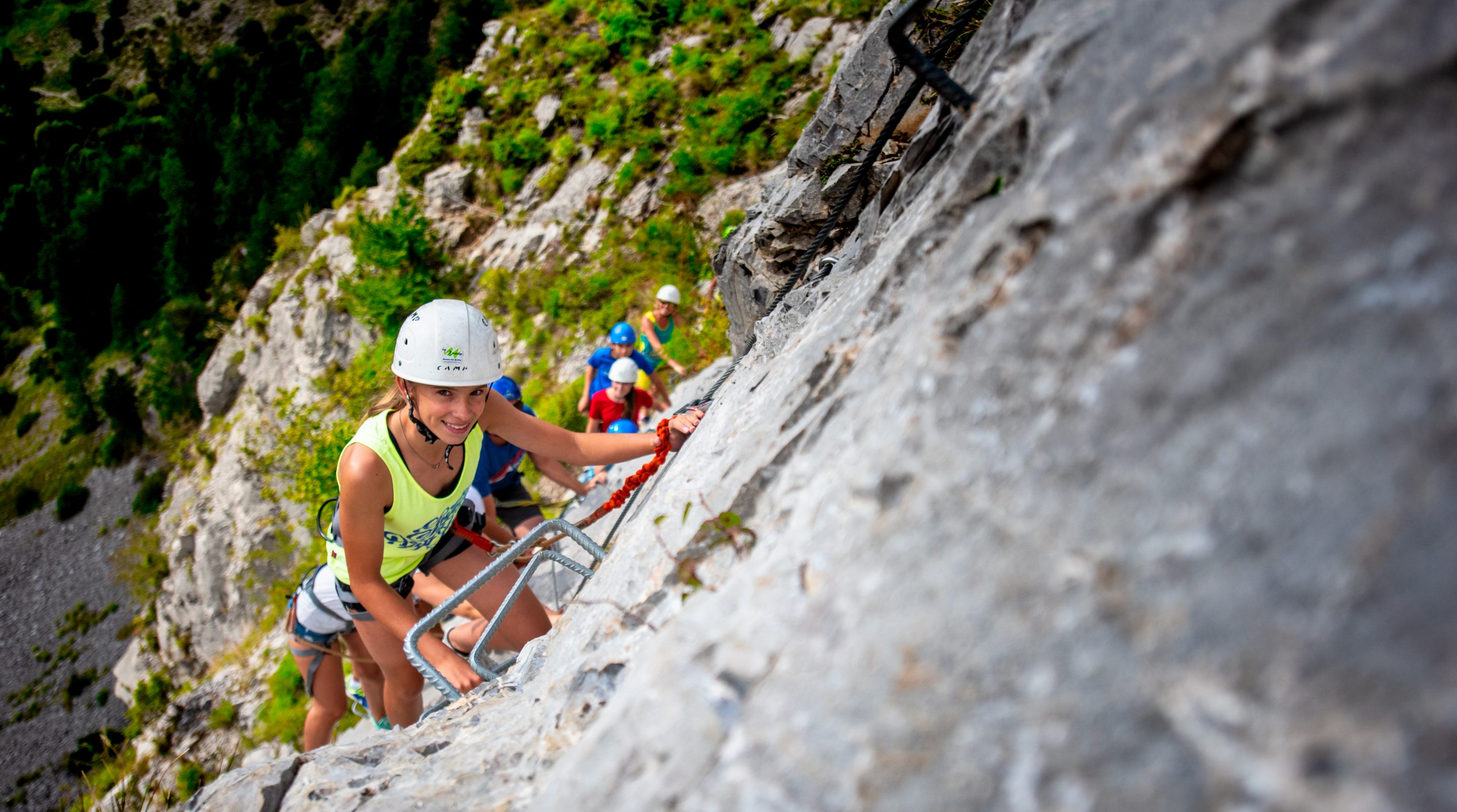
Hautes Alpes Via Ferrata
The Bureau des Guides 2 Vallées in Gap offers you the finest via ferrata routes in the Hautes-Alpes, supervised by state-certified instructors: Gapençais, Veynois, Dévoluy, Mathésine, Champsaur, Sisteronais, Buëch, Diois…
Via Ferrata brings the mountains within everyone’s reach. It’s a sensational intermediate activity between hiking and climbing.
– Our sites are suitable for everyone – children aged 7 and over.
– Routes with a wide range of gradients, heights, lengths, levels of difficulty, durations and levels of commitment (beginner, family, sports).
– Routes with optional aerial passages (Himalayan footbridges and/or zip lines).
– A professional guide to accompany you and supervise your progress
You’ll always find a course to suit your needs, so you can have a great time and recharge your batteries close to the elements.
Our guided Via Ferrata outings in the Hautes Alpes and beyond
Here are all the spots where we can guide you to discover via ferrata activities in the Southern Alps and Dauphiné in a safe and fun way.
-
Ancelle (Rouanette)
(
)
38,00 € /pers. -
La Grande Fistoire (Le Caire)
(
)
45,00 € /pers. -
Le Sautet
(
)
45,00 € /pers. -
Les Étroits
(
)
38,00 € /pers. -
The Agnielles Gorges
(
)
38,00 € /pers.
What is Via Ferrata?
Derived from the Latin word for “railroad”, this is an itinerary located on a rock face equipped with specific elements (cables, ladders, ramps, Himalayan footbridges, metal rungs, zip lines, etc.) designed to facilitate progress and optimize the safety of those using it. Climbs are secured by lanyards attached to the harness, which are hooked onto a cable (known as a “lifeline”) running the length of the route.
The first via ferrata for tourists was created in 1843 in the Austrian Pre-Alps at Haut Dachstein (the Rankfluft). In France, the Pic du Midi d’Ossau was equipped with chains for certain passages in 1880. In 1899, the Germans equipped the first routes (the Heilbronner route) in the German Allgau Alps. In 1903, the Italians equipped the Marmolada in the Dolomites (3343m), as well as the Pössnecker (Mesules) in the Sella group. The Austrians equipped L’Eggersteig in 1912 (Wilder Keiser massif in Tyrol).
The Italian army drew inspiration from these techniques in 1914/1918, when it rudimentarily equipped the steep Dolomite passages so that equipped artillery fighters could pass between two valleys. The Italian Alpine Club (CAI) then upgraded certain Dolomite routes, notably the Via de la Bochette, for mountaineering tourism.
France’s first equipped modern tourist site is in the Hautes Alpes! La Grande Falaise de Freissinière in 1988, followed by the Aiguillette du Lauzet (Monêtier-les-Bains) in 1990, then Les Vigneaux (1991 – La Balme and Le Colombier) and La Croix de Toulouse in 1993.
More recently, a more basic version has seen the light of day: via corda or via cordata (no cables, just ropes). In the Hautes Alpes region, the first site to be equipped will be Ceillac (Cascade de la Pisse) in 2023.
The sensations of climbing in this vertical environment are similar to those of rock climbing, and you quickly gain height simply by moving. It’s a fun way to discover magnificent landscapes and verticality. It’s all the more satisfying when you reach the summit, having had a great time. Most of the time, the return journey is made on foot on a footpath, so you can share your emotions and feelings with the rest of the team.
The most emblematic via ferrata sites in the Hautes Alpes
Our Bureau des Guides offers Via Ferrata star outings from Gap, in the heart of the Hautes-Alpes. On request, we can organize outings in other Dauphiné valleys. Don’t hesitate to ask.
- In the Queyras: Pra Premier / Combe de la Roche (Arvieux), Château-Queyras, Rochers de la Clapière (Ceillac),
- In the Ecrins / Vallouise region: Gorges de la Durance, l’Horloge (L’Argentière-la-Bessée), Gorges d’Ailefroide, les Vigneaux (Pelvoux Vallouise), Grande Falaise (Freissinières), Tournoux or Torrent de la Combe (Puy-Saint-Vincent).
- In the Briançonnais: Mines du Grand Clôt (La Grave), Arsine (Villar d’Arène), Aiguillette du Lauzet / Via du Rocher Blanc / Croix de Toulouse / Rocher du Bez / L’Yret / La Schappe (Serre Chevalier Briançon)
- On Serre-Ponçon: les Orres (Marcelinas / la Cascade)
- In the Champsaur / Veynois region, the Vires des Gorges d’Agnielles (La Faurie), Rouane (Ancelle),
- In Devoluy: les Etroits (Saint Etienne en Devoluy). There are even Via Souterrata (see Trous de la Tune in SuperDevoluy).
In the Alpes de Haute Provence, the Motte du Caire site is a must, and in nearby Isère, the via ferrata at Le Sautet is not to be missed (Mathésine).
More information
- Activity available from June to September.
- Schedules are subject to availability.
- You can indicate your preference when making an appointment.
- You will then receive full details of your activity (address, contact details and practical information).
- In the event of cancellation due to weather conditions, the activity will simply be postponed or cancelled.
Equipment required
- Bring your sports shoes, a backpack with water bottle and a snack.
- You’ll meet the guide and other participants at the specified location (see map provided): our BE instructor will welcome you and fit you out.
- All equipment required for the activity will be provided and explained:
- via ferrata: helmets, harnesses, dynamic lanyards
- canyoning: neoprene wetsuits, helmets, harnesses
- The equipment complies with CE standards and is inspected before each use.
- The various stages of the activity and safety rules will be explained to you before you set off (briefing).
